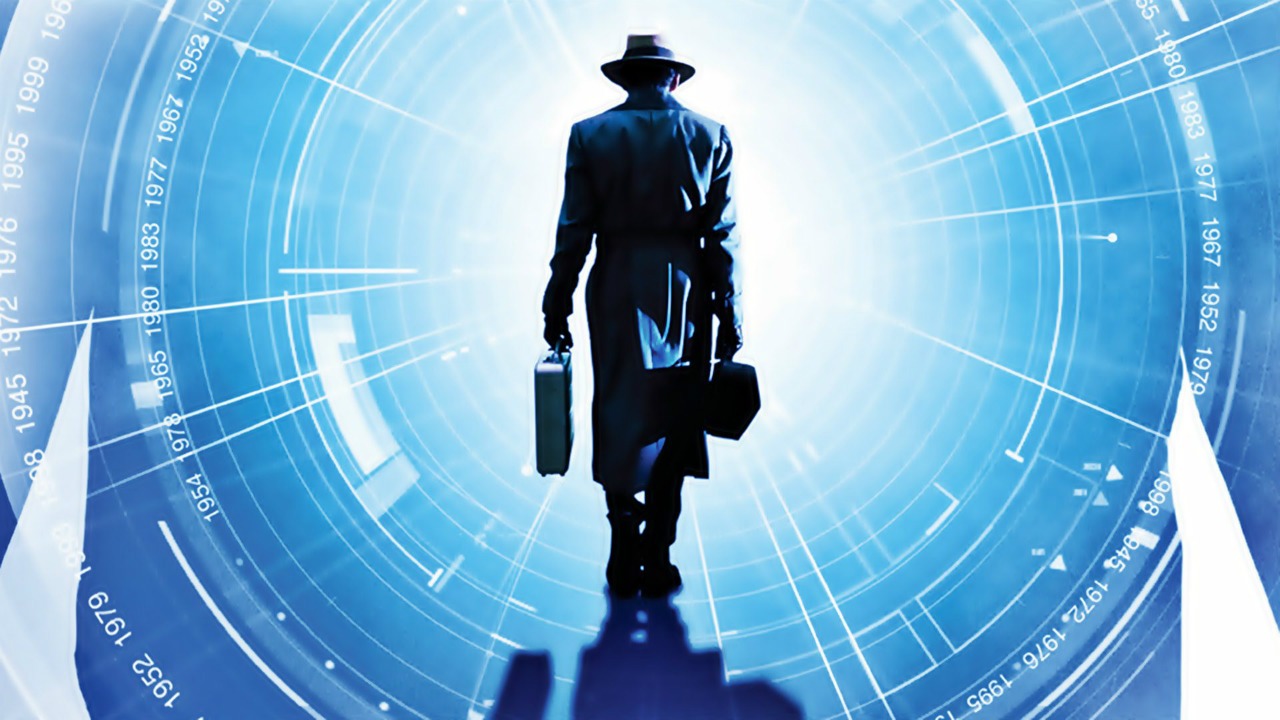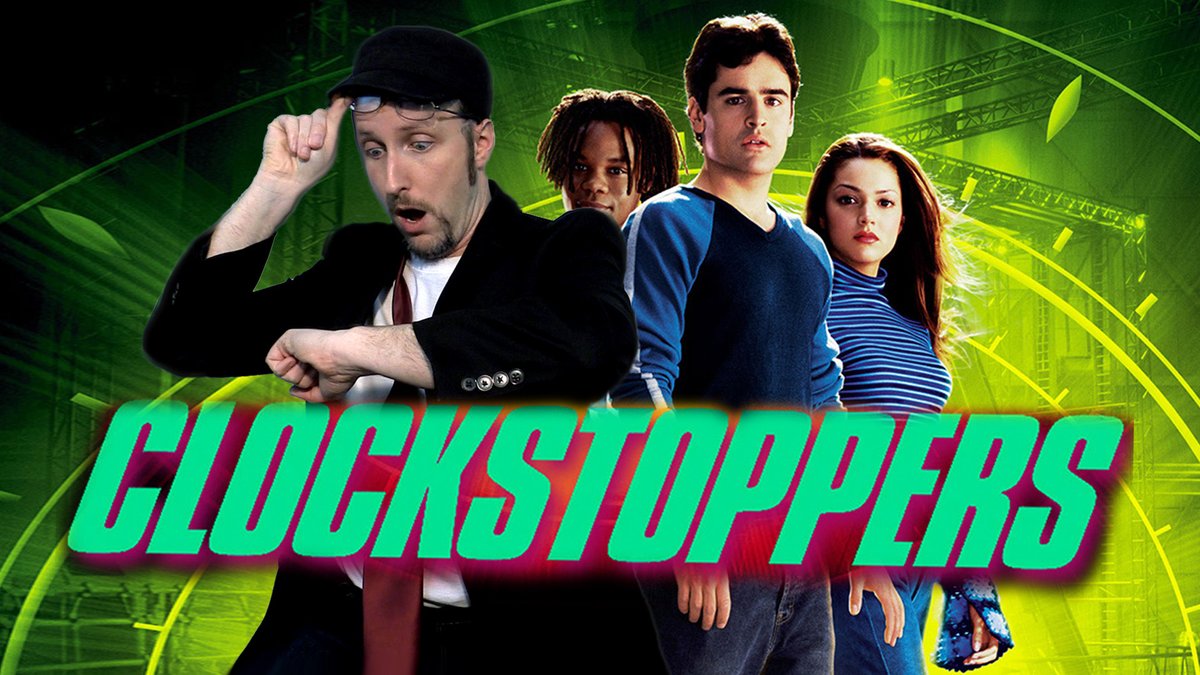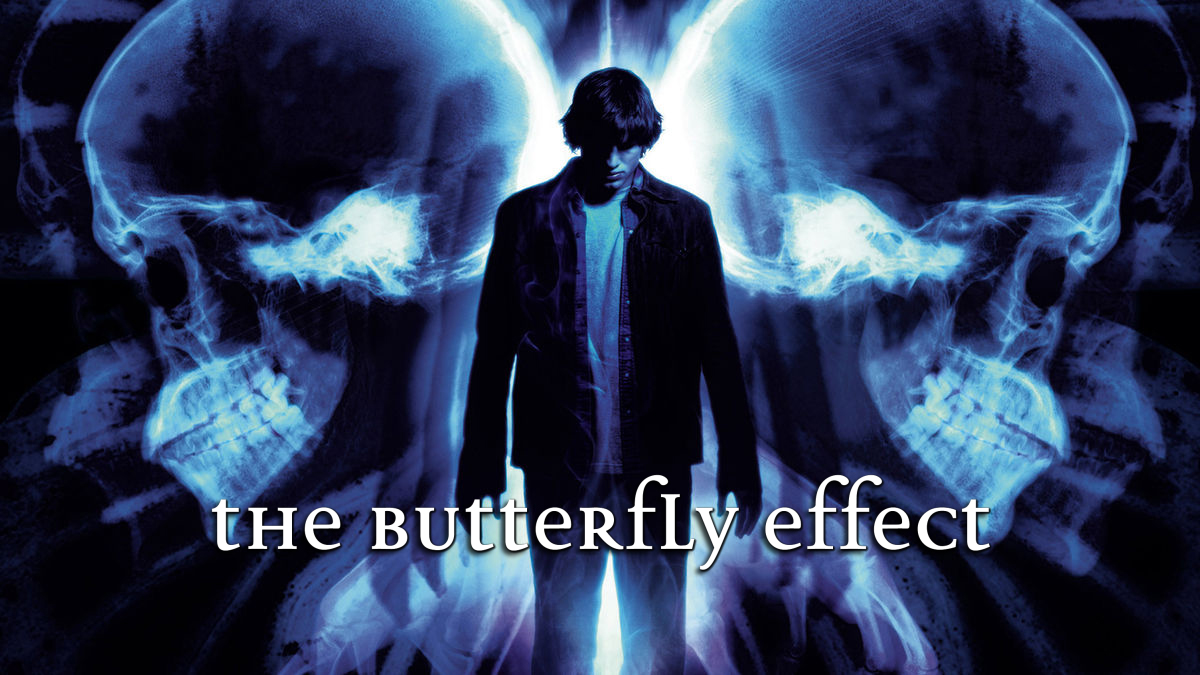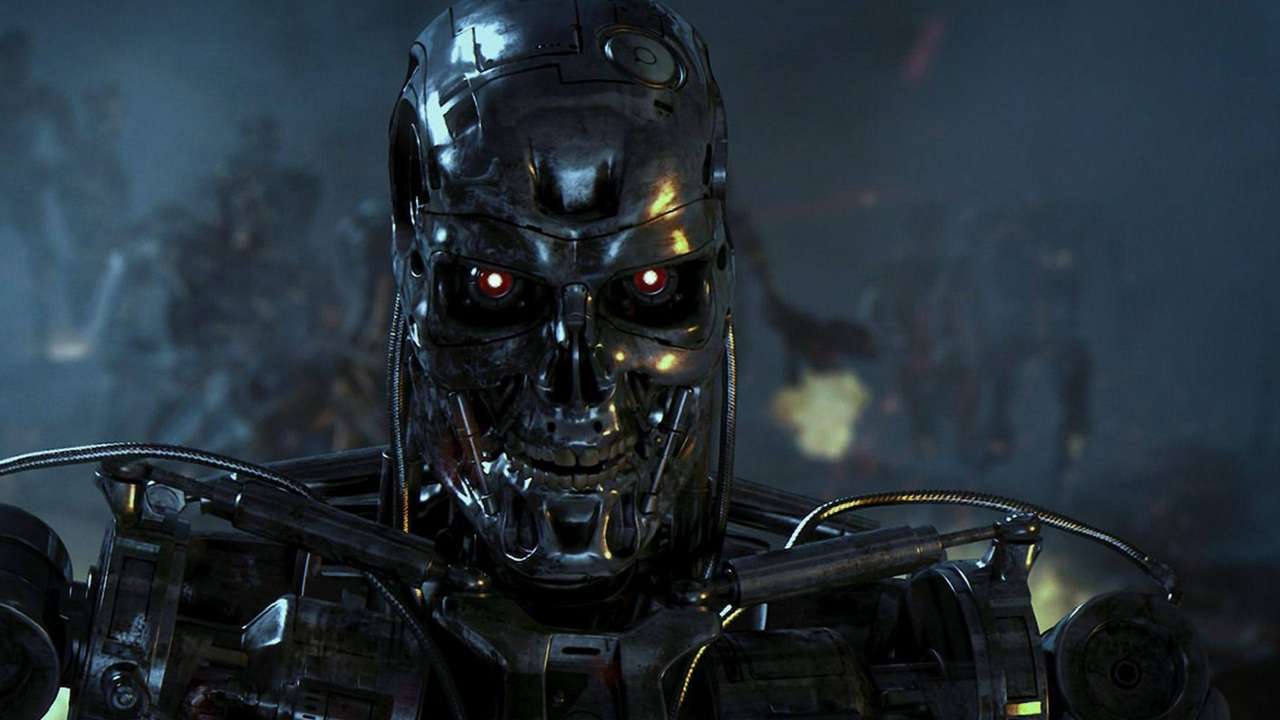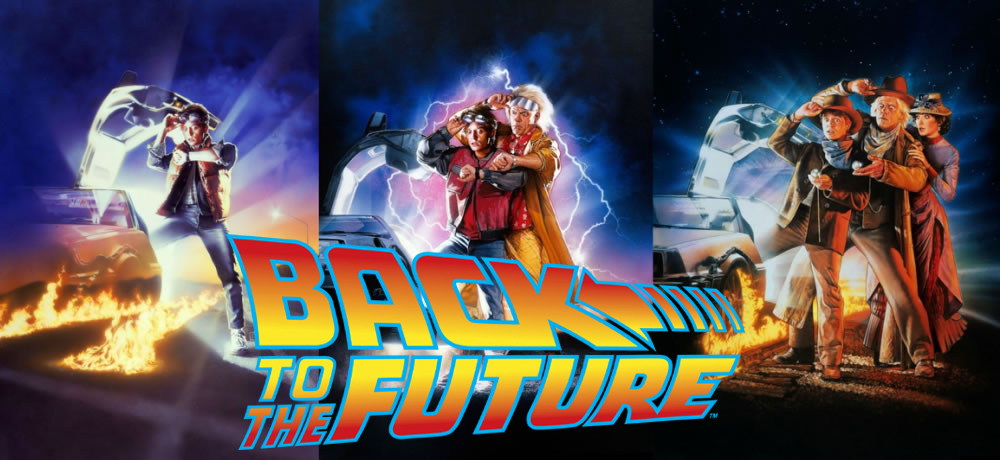I began to revisit the Terminator series to understand its puzzling depiction of traveling through time. I came up with an alternate ending for the first entry in that series that led me to think that it’s all a giant temporal loop. Or, to steal a quote, “time is a flat circle“. Predestination paradoxes are a go-to section when filmmakers incorporate time-travel aspects in their stories. It’s gotten so rampant that it now qualifies as a deus ex machina device: Explaining everything without explaining anything. Though there are plenty time-travel movies that have no reliance on that plot device and actually make sense all the way through, even some of the ones that don’t qualify for that are still good. So, in honor of SCI-FI month here at Action A Go Go, here are my top 10 time-travel films/series from least to greatest.
10.)
CLOCKSTOPPERS
Release Date: March 29th, 2002
Synopsis and Thoughts: A CGI Nickelodeon action-comedy directed by Jonathan Frakes (Commander Riker from Star Trek: The Next Generation), the film’s plot revolves around teens who discover a time-manipulation device and their efforts to keep it out of the hands of the CEO of the company responsible for its creation. Michael Biehn, who was the hero of The Terminator (1984), plays the evil CEO and foolishly wants to overthrow the federal National Security Agency. Though the film had a negative reception, it kind of made me wonder if super-speed is a form of time-travel. In the film, that idea is implemented with the aforementioned device (called Hypertime). Any person wearing the Hypertime has his/her own personal timeframe rapidly accelerated. They would be moving so fast that they perceive other people or objects as moving very slowly or at a stand-still. We’ve seen a similar occurrence in X-Men: Days of Future Past (2014) with the character of Quicksilver and how he perceives the world because of his speeding ability. But one of Hypertime’s flaws is that it affected aging. You age normally while in Hypertime, but prolonged exposure causes rapid aging once you step out of it. Yeah, once I stop traveling faster than everyone, I become an old man. No thanks, check please!
9.)
GROUNDHOG DAY
Release Date: February 12th, 1993
Synopsis and Thoughts: Would you think of it as hellish if you found yourself in a Clockwork Orangian repetitive loop of the same winter holiday day over and over again in small-town Pennsylvania? That’s how weatherman Phil Connors felt at first. This isn’t an action film, but deserves mention because of its depiction of time-travel. Well, that and because it stars Bill Murray. He plays the aforementioned Connors, a very arrogant and rude weatherman covering the Groundhog Day festivities in Punxsutawney, Pennsylvania. He makes no secret of his disdain for the town and then wakes up the next morning. He discovers that he’s still in Punxsatawney on Groundhog Day in an endless, unexplained time-loop. Once he realizes it and overcomes his shock, he takes advantage of it selfishly (stealing, womanizing, and binge drinking with no consequence). But after so many repetitions, he has a moral epiphany, one that sets him on a road to redemption as a person. Though time loops didn’t begin with this movie, it certainly popularized the trope and its legacy as huge plot devices in films such as 12:01 (1993) and Edge of Tomorrow (2014).
8.)
THE BUTTERLY EFFECT
Release Date: January 23rd, 2004
Synopsis and Thoughts: Lemme just start of by saying that we all know that Ashton Kutcher can’t act and how he managed to grow beyond both That ’70s Show and MTV’s Punk’d is beyond me. But his role as Evan Treborn in this film is probably my favorite of his. Evan Treborn and his father both possess the power of astral time-travel. Evan suffered from blackouts during his childhood and kept a journal of his daily life until the blackouts ceased in his young adulthood. As a college student, he read one of his old journals and discovered he could time-travel by focusing on the events described therein. When he travels to the past, he’s occupying his younger self’s body during a blackout (it’s implied that his blackouts were caused by his future self, which kind of makes it predestination). His aim was to change the past to make a better future for him and his friends, but in every case where he changed an event, somebody (even himself) had to lose. What’s more is that every change he made caused his memories to change to adjust to the new temporal event sequence he created, causing him massive migraines and nose-bleeding. Eventually, he altered his timeline so much that he had no journals to use as a focus for his astral time-travel. By focusing on home movies instead, he was able to rewrite history for himself for good once and for all. The film uses the chaos theory concept of the butterfly effect to show the inherent dangers of changing the past, no matter how well-intentioned you are. It was interesting to see Evan go from an every man, to popular frat-boy, inmate, quadriplegic amputee, to finally just set on making things right even at his own expense.
7.)
SOURCE CODE
Release Date: April 1st, 2011
Synopsis and Thoughts: This film’s application time-travel is very interesting, functioning like Quantum Leap meets Groundhog Day: Astral time-travel repeated over and over again until the mission is completed. Colter Stevens (played by Jake Gyllenhaal) was a decorated US Army helicopter Captain. Reportedly killed during combat in Afghanistan, his remnants were appropriated by the United States Air Force and he was kept on life support. Because of the extent of his injuries and the damage to his brain, scientists determined that Capt. Stevens was the most viable candidate for a classified experimental computer program called “Source Code”. Source Code basically projects the consciousness of comatose individuals into the past of parallel timelines: The brain has an electromagnetic field that remains charged, just briefly, even after death. Circuits remain open. The brain also contains a short term memory track that’s approximately eight minutes long. It records the last eight minutes of an individual’s total experience. In combining these two phenomena, circuitry that remains viable post-mortem and a memory bank that goes back eight minutes, Source Code capitalizes on the overlap. By pinpointing to a specific location in the past, Source Code projects the user’s consciousness over that of a compatible individual’s (compatibility in terms of gender, body size and synaptic maps), enabling the user to occupy his temporal counterpart’s body for their final eight minutes. Once that duration expires, the user’s consciousness occupies an intermediary space. The scientists have connected the user’s partially active brain to machines for communication, deployment into Source Code, and mental conditioning.
Because Capt. Stevens’ body is severely mutilated and his brain barely has awareness, his mind projects the intermediary space as a cockpit (he also perceives his body as whole, not maimed). To further explain, his mind is interpreting both his last fully conscious experience (in the cockpit of the helicopter right before and during his crash) combined with the deteriorating state of his body as it actually is and where it actually is (in a life support chamber). Since Capt. Stevens’ subconscious mentally “shapes” the intermediary space as a mix of both a damaged helicopter cockpit and the life-support containment pod that his physical body actually in, it is indicative that his brain still possesses some level of sensory awareness. His last conscious memory (the helicopter crash), combined with the meager sensory input about his current environment, are his subconscious’ method of helping him cope with all that is happening to him. The cockpit’s leaking fluids, temperature fluctuations and such reflect the occurrences with his real body and bodily fluids and physical states, and how his brain is interpreting those based on his sensory input.
Both this film and The Butterfly Effect depict astral time-travel: Projecting minds backwards through time to inhabit certain bodies in the past of real or parallel timelines. But the ending raises many questions. Stevens was repeatedly sent to occupy the body of a school teacher named Sean Fentress in the past of parallel timelines in order to prevent a terrorist attack from happening in the real main timeline. Each time, he has only 8 minutes to complete his mission. He eventually does so, but ends up permanently occupying Sean’s body in the timeline in which he succeeds, and even steals Sean’s girlfriend (played by Michelle Monaghan) too. Did the real Sean die with Colter’s maimed body in the main timeline?
6.)
TERMINATOR SERIES
Release Date: 1984-present
Synopsis and Thoughts: Of the five films (and TV series) which comprise this franchise, the first two, The Terminator (1984) and Terminator 2: Judgment Day (1991), are the only ones that matter. This series now screams “never-ending loop”, an assessment that the third entry in this series established while pretty much invalidated anything portrayed in the second entry. Anything we’ve seen after the second film should be regarded as a “What If?” story, just like the second Highlander film.
In the original history, a computer company named Cyberdyne Systems creates an artificial intelligence for the U.S. government to be used in place of the US Defense Department. The A.I. (called SkyNet) began learning at a geometric rate and determines that all of humanity is bad and a threat. Launching American missiles against targets in the former Soviet Union in 1997 created a worldwide nuclear holocaust resulting in the deaths of over three billion humans. SkyNet creates cyborgs, aerial/all terrain vehicles to exterminate the remaining humans. The human resistance, led by John Connor, fights back against SkyNet and destroys its defense grid. That should’ve ended the war, but SkyNet prepared for this contingency by creating a time-travel device. Its logic was that killing John Connor in the present would make no difference, but erasing his entire existence would. SkyNet sent a total of three human-looking cyborgs called Terminators back into the past to kill Connor at various stages in his life, from when he was nothing more than an itch-in-his-daddy’s-pants to adulthood. Each time, the Terminators failed partly because the future John Connor sent warriors into the past to protect his younger selves. The third film established and depicted the inevitable holocaust that SkyNet would bring about. The first film ended when Jon’s mother, Sarah, smashed the Terminator sent to kill her in the year 1984. Cyberdyne found the remains of that Terminator and reverse-engineered the technology that would eventually lead to SkyNet. Future John sent one of his soldiers (Kyle Reese) back in time to protect Sarah. Reese died protecting Sarah, but not before impregnating her. In a way, Connor and SkyNet sending their agents back in time to 1984 to get destroyed ensured their own existence.
In the second film, John, Sarah and another Terminator (acting as a protector for the pre-adolescent John) destroyed all of Cyberdyne’s research. By the third film, we learned that the U.S. government had back-up copies of Cyberdyne’s research and advanced SkyNet much later than in the original history, but the outcome was still the same. The series relies on both predestination and parallel timelines, but think of this: What if the Terminator in the first film succeeded in its mission? If it had killed Sarah Connor, not only would John be erased from existence, but so would the Terminator. It never would’ve gotten smashed in a hydraulic press, so its remnants would never be found by Cyberdyne, and they wouldn’t have created SkyNet, which sent the Terminator back in time in the first place. It would’ve caused a paradox that would erase the future timeline and would result in Sarah Connor being alive again as she could not have been killed by a non-existent Terminator. Kyle Reese also wouldn’t have gone back in time to impregnate Sarah, so John wouldn’t exist in this case either.
Every time SkyNet or John sends one of their agents into the past, nothing is changed. Their actions just create timelines that run parallel to each other, but all tie into the same circle. It’s all a giant time loop, everything we’ve seen in the Terminator films will happen over and over again.
5.)
12 MONKEYS
Release Date: December 29th, 1995
Synopsis and Thoughts: A few years before Bruce Willis became M. Night Shyamalan’s poster-boy from the city of Philadelphia, he was a prisoner of the city. In a dystopian future, a group called the Army of the Twelve Monkeys released a virus that eradicated most of humanity. By 2035, James Cole (Willis) is a prisoner living in an underground compound below the ruins of what was once Philadelphia. He is selected and trained to be a soldier, one to be sent back in time to find the virus so that the scientists of his time can cure it. The film has a very noir style to it, similar to Blade Runner (1982). Terry Gilliam’s predilection for dystopian tech-based futures is no different here than it was for Brazil (1985). The time-travel involves Cole landing in 1990 and even the World War I era. But ultimately, he fatally discovers that his journey is a time-looping paradox as he is shown to be responsible for his own visions he’s been seeing since childhood.
4.)
DONNIE DARKO
Release Date: October 26th, 2001
Synopsis and Thoughts: A guy in a creepy rabbit suit, the manipulated living, manipulated dead, living receiver, tangent universes, a jet engine and 28 days later all make up the cult classic, Donnie Darko. Also starring Jake Gyllenhaal as the title character, the whole movie feels like it was based on an indie comic book series. Dark, surreal, and original, Donnie Darko follows a troubled teen of the same name trying to understand his visions of the future and his role in it. Donnie’s a typical teenager who uses his irreverence to mask his insecurities. His journey begins when he’s caught in a time loop. This loop was caused by a future object being sent to the past, creating tangential parallel universe that will destroy the main universe in 28 days. For some reason, Donnie is chosen and must navigate through this tangent universe in order to end the time loop. He has help along the way from many of the central characters in the film (Mrs. Pomeroy, Gretchen, Grandma Death, Dr. Thurman, Frank the Bunny). A jet engine (artifact) falling through his bedroom caused the creation of the tangent universe, so Donnie has to go through a series of events to prevent it. However, there are indications that Donnie has been unsuccessful in previous iterations of the loop. He has a level of awareness of everything that was going to happen to him up until certain point. So technically, Donnie’s life, in essence, is a self-fulfilling prophecy as he is carried out all the events that he knew he was destined to take.
3.)
DÉJÀ VU
Release Date: November 26th, 2006
Synopsis and Thoughts: This film involves time existing as parallel lines to one another. Let’s say, for example, that our present is the one true reality. Going back into the past wouldn’t alter our present because the chance is high that your actions will simply create a new timeline with the same history as ours (to a point) that runs parallel to ours. Also, traveling into the past could land you in the past of a parallel timeline. Which means any action in that timeline’s past will affect that timeline only. Denzel Washington stars as an ATF agent named Doug Carlin investigating a bombing aboard a naval ship that killed more than 500 men, women and children. In order to track the bomber, he teams with an FBI team led by Val Kilmer. Using a surveillance technology network called “Snow White”, they can recreate an image of the past from 4 days prior. However, “Snow White” is actually a form of time travel technology and Doug insists that they use it to prevent the bombing from ever having occurred. The bomber is eventually captured in the present, but Doug is convinced that more should be done, especially since he spent days observing the past activities of one of the bomber’s separate victims, played by Paula Patton. What occurs next is a chance to correct the present by changing the past.
Though not outright stated in the film, it’s clear from certain visual cues and dialogue that Doug had made multiple attempts to change the past himself and the the Doug we’ve been watching for the whole film is just the latest iteration attempting the prevent the bombings in the past. His past time-traveling selves left some initially baffling clues for his present day self to find in case he failed in his mission. It’s predestination involving four separate timelines. In fact, click here for the visual explanation.
2.)
INTERSTELLAR
Release Date: November 7th, 2014
Synopsis and Thoughts: Christopher Nolan’s Interstellar is the most grounded sci-fi film I’ve ever seen. It makes uses of physics and the idea there are beings and planes of existence greater than three dimensions. It starts off in a dystopian future where Earth is becoming a global dust bowl and life will eventually be no more. Former NASA pilot Joseph Cooper (played by Matthew McConaughey) joins a team of scientists to find worlds that will be able to sustain humanity. Their journey involves wormholes to other solar systems, time dilation factors, a villainous Matt Damon, black holes, tsunami planets, and time-travel to ensure humanity’s survival. The time-travel part has a bit of predestination added to it. Also, if you haven’t seen the film, do not read the explanation I’m about to give:
After Cooper enters Gargantua (the black hole) and ejects from his collapsing ship, he’s falling towards the black hole’s singularity (from the looks of it, it’s exactly how one of the scientists described it: A pearl, a giant pearl with flashing lights around it). Both Cooper and his robot companion TARS should’ve been physically destroyed once they landed in Gargantua’s event horizon, but they weren’t. TARS went into Gargantua first and got close enough or inside of the singularity to collect data on it, then Cooper plunged into Gargantua shortly after. Instead of being crushed, both of them were placed inside a tesseract (a four-dimensional cube). Cooper and TARS were saved from the singularity, brought into a higher-dimensional plane and placed in the tesseract, which is basically time as physical dimension. The beings that live in this higher dimension created the tesseract in Gargantua because the black hole generates a tremendous amount of energy and gravity, enough to maintain the tesseract. The reason it looks like a series of bookshelves is because the 5-D beings docked the tesseract to the bedroom of Murph (Cooper’s daughter), enabling him to perceive and effect every moment that has occurred in that room. Also, the 5-D wanted their perception of time translated into a form that Cooper would (eventually) understand. TARS arrives shortly after Cooper does and relays the singularity data to him. Cooper manipulates events via the tesseract to transmit that data to his Murph, who uses it to jettison humanity from Earth into a peaceful space-faring society. Once they accomplished their mission, he and TARS were ejected out of the tesseract via the wormhole through which they traveled earlier in the film. They both arrive at the wormhole near Saturn some 75 years after initially entering it. The 5-D beings are actually humans. They evolved from the colony that Amelia (Anne Hathaway) was seen establishing on the Edmunds planet in the last scene of the film. These humans evolved to master the universe and live in a five-dimensional reality. Despite their mastery of time, they can’t pinpoint exact locations in the past or find specific events. So they caused bizarre phenomena to help out their ancestors AND ensure their survival (especially that of the Coopers): They placed the wormhole near Saturn and created Gargantua and the tesseract, using the Coopers to change the past without creating a paradox.
1.)
BACK TO THE FUTURE TRILOGY
Release Date: 1985-1990
Synopsis and Thoughts: Of all the time-travel movies listed here, the Back to the Future three-part film series is the best. Not just because of the chemistry between Christopher Lloyd and Michael J. Fox as Emmett “Doc” and Marty McFly respectively, or the insult of being called a “butthead” added to pop culture lexicon, or even because of its special effects. I say it’s the best because its use of time travel made sense without any confusion. In this series, time is simplified as a straight line going forward. It has zero reliance on predestination paradoxes or parallel timelines.
This trilogy’s depiction of time-travel is in the form of a modified DeLorean. A specific date and time is set by the driver. Once the driver reaches 88 miles per hour in the DeLorean, the flux capacitator (which makes time-travel possible) is activated and allows the massive object to move through time to the pre-set coordinates. To apply a metaphor, this series depicts space-time as a river that flows in only one direction: Forward. If you go in the opposite direction of the river and throw a rock in it at certain point, a ripple effect is created (depending on the mass of the rock) that changes its flow, but not the direction. In this series, present and future events are altered due to new events introduced in the past. Marty McFly from 1985 travels to 1955 and when his presence nearly keeps his parents from meeting, he begins to fade from existence as a result. Eventually, he ensured his existence by convincing his parents’ younger selves that they belong together. Returning to 1985, he finds that his parents are more assertive and successful. After the DeLorean was stolen in the second film and used to alter the past (again in 1955) to make the film’s cheif antagonist Biff Tannen wealthy and powerful, the change altered Marty’s present-day 1985 for the worse. Him, Emmett Brown, his girlfriend Jennifer and pet-dog Einstein were not affected because they existed outside of time when the change was made. Eventually, the proper 1985 was restored when Marty prevented 1955’s Biff Tannen from ever using the sports almanac that made him a rich man in the alternate 1985. A lightning bolt second Doc Brown and the DeLorean into the late 1800s. While there, Doc left instructions via the post office for the Marty stranded in 1955 to find the DeLorean in that time period and use it to retrieve Doc from the Wild Wild West. In the end, all was set correct with the DeLorean being destroyed.


